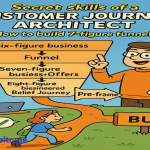This is a go-to guide for content writers and professionals who want to turn LinkedIn posts into client magnets. It would be useful for writers, marketers, and content strategists who want to establish credibility and authority via LinkedIn posts.
Table of Contents
Introduction
If you are a content writer in India right now, here’s the brutal truth:
AI is here. Recruiters are spoilt for choice. And job openings? They’re shrinking by the day.
The old strategy of uploading your resume, attaching a clean portfolio, and waiting for a callback isn’t working anymore. It’s not that you’re not good enough. It’s just that everyone is doing the exact same thing.
What works now?
Building authority first. Applying later.
And the best place to do that?
LinkedIn.
Yes, LinkedIn. It is not just a job search platform anymore. It is not just a space for motivational posts and “open to work” banners. It has become the most powerful playground for content writers, strategists, freelancers, agency owners—basically anyone who earns by writing or selling with words. According to recent studies, LinkedIn posts drive 30% more profile visits than resumes.
Yet, most senior copywriters and content professionals don’t know how to use it beyond posting the occasional heartfelt update.
And not knowing how to use it smartly is costing them real clients. Real gigs. Retainer deals.
Because LinkedIn is the place for you to:
- Build a personal brand that attracts inbound leads
- Land retainer clients from high-trust niches (like SaaS, education, and finance)
- Create performance-driven content for small Indian brands looking to grow
And, this blog will help you understand how you can:
- Use storytelling to build trust
- Create buyer-focused content
- And how to position yourself as an expert (even before your first DM)
India is LinkedIn’s second-largest user base, with over 100 million members. It is not a platform where only Western creators dominate anymore. This is your playground too. You just need the right playbook. Because generic posts don’t work. Me-too content dies in the algorithm.
You need a system. A framework. A voice. A plan.
This blog is that plan.
Let’s dive in.
What makes LinkedIn content different from Instagram, X (formerly Twitter), or blogs?
Content is content, anywhere you post it…right?
Wrong.
Unlike other social media platforms, LinkedIn content thrives at the intersection of storytelling and strategy.
Instagram is visual. X is snappy. Blogs are long-form.
LinkedIn is for professionals who skim, but with an exception.
The audience on LinkedIn is ready to go deep if the hook is strong enough.
This means:
- Your post needs to build curiosity and have a strong hook in the first 2 lines
- It must deliver substance (data, insight, or a personal angle)
- It must feel human, yet credible
- And it should nudge a micro-conversion (engagement, profile view, DM, follow)
Do these four things and your post will become a high-performing one, sure to grab some important eyeballs.
This is not the platform to write like a resume. It is the platform to write like a thinking professional with lived experience.
But how do you ensure that that happens every time?
“Are there enough stories?”, “ Are my experiences enough?”, “Would the audience like what I post?” are some questions that bug most writers when they set out to write their own stories instead of fictional narratives.
To put your mind at rest, experiences are enough if you can tell them through stories.
Storytelling frameworks that work best on LinkedIn
Most of you are already conversant with storytelling formulas like PSA, AIDA, FAB, or 4C. These aren’t just copywriting gimmicks. They are powerful tools that go a long way in capturing the audience’s attention.
And, you can wield them to craft gripping tales from everyday experiences.
Here’s how:
1. Framework: PSA = Problem – Story – Answer
Best for: Thought leadership, vulnerable career stories, success pivots
This framework works because it builds trust. You start with a real tension (Problem), humanize it with your own experience (Story), and leave the reader with a useful or inspiring takeaway (Answer).
Example:
“I almost gave up on writing last October.
Four clients ghosted me back-to-back. My confidence tanked.
I decided to stop sending cold emails. I focused on building my brand on LinkedIn instead.
Three weeks later, I signed a retainer client who found me through my posts.
Don’t underestimate the power of showing up online.”
2. AIDA = Attention – Interest – Desire – Action
Best for: Promotional posts, lead magnets, service showcases
You begin by grabbing attention with a contrarian or urgent statement that is relatable to most in your niche. You spark interest with relevance, create desire by showing a transformation, and nudge action (comment, DM, sign-up).
Example:
“Most content writers don’t have a pricing problem. They have a positioning problem.
If your LinkedIn profile still says ‘freelance writer’ in 2024, you’re invisible.
Position yourself as a ‘B2B content strategist’ or ’email specialist for coaches’.
Specificity wins business. Always has.”
3. FAB = Feature – Advantage – Benefit
Best for: Writers handling product-focused or service-focused content for brands
You start by naming a feature (e.g., next-day delivery), why it matters (advantage), and describing its real-world benefits (what it enables the customer/client to do or achieve).
Example:
“Client: A Delhi vegan skincare startup with 10K Instagram followers.
Feature: We introduced a story-led product carousel every week.
Advantage: Their posts became consistent and conversion-focused.
Benefit: Engagement rose by 2.5x in 3 weeks. They closed 4 orders from organic DMs.
Great content isn’t just seen. It sells.”
4. 4C = Clear – Concise – Compelling – Credible
Best for: Mini case studies, client wins, insights
This is your go-to if you want to build trust without fluff. Short, proof-backed posts that highlight real results.
Example:
“I helped an international SaaS brand rewrite its product descriptions.
I used buyer-centric language, added story-driven product intros, and eliminated jargon.
Result?
- 28% higher time-on-page
- 17% rise in add-to-cart actions
No discounts. No flashy redesigns. Just content that spoke directly to the customer.”
Here’s a comparison chart of all the frameworks we just discussed.
As you can see, your story does not have to be exceptional or lengthy, it just needs to speak about your experience and show your insight.
This makes future clients feel that they are not entrusting their business to a newbee with zero experience.
Why Indian content writers should be writing on LinkedIn (and for it)
Still wondering if it’s worth your time?
87% of recruiters say they use LinkedIn to vet candidates, and a large number of freelancers use social media to get new clients.
So, whether you are looking for a better job or looking to land high-paying clients, you cannot ignore this platform.
But this is not just about writing for yourself. Small Indian businesses (especially in Tier-1 and Tier-2 cities) are finally waking up to the power of organic LinkedIn presence.
They need writers who can:
- Make their founders visible online
- Turn testimonials into stories
- Break down service offerings into simple, sharable posts
This is an entire economy waiting to be tapped. By sharing your experiences and increasing your online visibility, you tell your potential clients that you already have the know-how.
The best part?
You can do this for free by investing your time only. I have just shown you four actionable frameworks to achieve just that.
The next roadblock is the regular postings.
Worried about the regular post ideas?
If you have one good idea and a good post, you can spin it in five different ways.
How to repurpose one idea into five LinkedIn posts
You can do any of the following:
- Turn it into a personal story (Problem – Story – Answer)
- Create a listicle or carousel from it (Insight + Tips)
- Share a mini case study (Clear – Concise – Compelling – Credible)
- Frame it as a myth-buster (Attention – Interest – Desire – Action)
- Ask your audience a question about it (engagement post)
Let’s take the first example from the previous section. Here’s how to spin it in five different ways.
1. Personal story PAS
From Ghosted to Glowing: How LinkedIn Saved My Freelance Career
Problem: Last October, I hit rock bottom as a freelance content writer. Four clients ghosted me in a row, leaving my inbox empty and my confidence in tatters. I felt like giving up on writing altogether, questioning if I was cut out for this unpredictable career.
Story: Instead of wallowing, I decided to rethink my approach. Cold emailing wasn’t working—it was draining and yielded no results. I turned to LinkedIn, where I could showcase my expertise and connect directly with my audience: Indian content writers and business owners. I started posting consistently about my writing journey, sharing tips on crafting high-converting sales pages and engaging blogs. I poured my heart into authentic stories, like how I helped an edtech client boost sign-ups with a killer sales page. It wasn’t easy to show up daily, but I kept at it.
Answer: Three weeks later, my persistence paid off. A retainer client, impressed by my LinkedIn posts, reached out to hire me for a long-term project. That single client revived my confidence and my income. The lesson? Don’t underestimate the power of building your brand online. LinkedIn isn’t just a platform—it’s your stage to shine, connect, and convert. Keep showing up, and the right clients will find you.
2. Listicle or carousel
5 Ways to Turn LinkedIn into Your Freelance Goldmine
Cover Slide: Insight: Last October, I nearly quit writing after four clients ghosted me. Instead of giving up, I stopped cold emailing and built my brand on LinkedIn. Three weeks later, a retainer client found me through my posts. Here’s how you can do it too:
Slide 1: Post Consistently: Share daily or weekly insights about your niche—whether it’s writing sales pages or SEO blogs. Consistency builds trust and visibility.
Slide 2: Share Authentic Stories: Talk about your struggles and wins, like how I helped an Indian edtech client boost conversions. Authenticity resonates with clients.
Slide 3: Offer Value-Driven Tips: Post actionable advice, e.g., “Use PAS (Problem-Agitate-Solution) for sales pages to hook readers.” Value attracts clients.
Slide 4: Engage with Your Audience: Comment on posts, join Indian content writing groups, and build relationships to expand your network.
Slide 5: Optimize Your Profile: Use a professional headshot, a clear headline (e.g., “Content Writer for Indian Businesses”), and a bio showcasing your expertise.
Takeaway: LinkedIn isn’t just a resume—it’s a client magnet. Start posting today, and watch opportunities roll in!
3. Mini Case Study (Clear – Concise – Compelling – Credible)
How LinkedIn Landed Me a Retainer Client in 3 Weeks
Clear: In October 2024, I faced a crisis as a freelance content writer in India. Four clients ghosted me, leaving my pipeline dry and my confidence shaken. I needed a new way to attract clients without relying on cold emails.
Concise: I shifted my focus to LinkedIn, posting daily about my expertise in crafting high-converting sales pages and blogs for Indian businesses. I shared tips, client success stories, and authentic struggles to connect with my audience.
Compelling: Three weeks later, a retainer client reached out, impressed by a post about writing sales pages that convert (using the PAS framework). They hired me for a 6-month project, reviving my freelance career.
Credible: This wasn’t luck. LinkedIn’s algorithm favors consistent, value-driven content, and my posts reached over 1,000 views in India’s content writing community. By showcasing my skills (e.g., boosting an edtech client’s sign-ups by 50%), I built trust and landed the deal.
Takeaway: Stop chasing clients—let them find you. Build your LinkedIn brand with authentic, valuable content, and the right opportunities will follow.
4. Myth-Buster (Attention – Interest – Desire – Action)
Myth: Cold Emailing Is the Only Way to Land Freelance Clients
Attention: Think cold emailing is your only shot at freelance clients? I thought so too—until four clients ghosted me last October, leaving me ready to quit writing.
Interest: Instead of sending more emails, I debunked the myth that cold outreach is king. I turned to LinkedIn, posting daily about my expertise in writing sales pages and blogs for Indian businesses. I shared tips like using PAS (Problem-Agitate-Solution) to craft compelling copy and stories to help clients boost conversions.
Desire: Three weeks later, a retainer client found me through a LinkedIn post, hiring me for a long-term project. Why? My content showcased my skills and built trust—no cold emails needed. LinkedIn’s algorithm amplified my posts, reaching thousands in India’s content writing community.
Action: Stop wasting time on cold emails that go unanswered. Start building your LinkedIn brand today. Post one tip or story about your work this week, and see who reaches out. Share your results in the comments!
5. Engagement Post
Have You Ever Been Ghosted by a Client? How Do You Bounce Back?
Last October, I nearly gave up freelancing after four clients ghosted me. My confidence was shot, and cold emailing wasn’t working. So, I pivoted to LinkedIn, posting daily about my expertise in writing high-converting sales pages for Indian businesses. Three weeks later, a retainer client found me through a post and hired me!
What’s your go-to strategy for landing clients when the going gets tough? Are you sticking with cold emails, building your brand on LinkedIn, or trying something else? Share your tips or stories in the comments—I’d love to hear how you keep pushing forward! #FreelanceWriting #LinkedInTips
As you can see repurposing is not repetition. It’s repositioning.
Final word: writers who post are writers who get paid
There’s a hidden economy on LinkedIn. It rewards:
- Writers who think like strategists
- Strategists who write like humans
- Humans who can package value in 1,300 characters
You don’t need to be loud. You don’t need to post daily.
You need to:
- Show your thinking
- Share stories with stakes
- Package value in every post
Start with one post a week. Use the frameworks. Use the templates. And most importantly, use your voice.
Because the algorithm may boost your content. But your clarity will build your credibility.
Want to try it out?
Write one LinkedIn post this week using a framework and share your results in the comments!
FAQs
1. What types of LinkedIn content perform best in the Indian market for small brands?
Posts that combine storytelling with value — especially behind-the-scenes journeys, founder struggles, and customer wins — perform well. Indians respond to content that balances professional insights with emotional relatability. Carousel posts showing step-by-step transformations or lessons also do particularly well.
2. How often should I post on LinkedIn to grow a personal brand as a content writer?
Aim for 3–4 times a week. Consistency beats frequency. One post should be a story (using frameworks like Problem-Solution-Action), one should showcase results, one should spark engagement (like a poll or bold POV), and one should be educational. Overposting may reduce engagement.
3. How do I choose which story framework to use for a LinkedIn post?
Use Problem-Solution-Action (PSA) when sharing learnings, Before-After-Bridge (BAB) for transformations, and Attention-Interest-Desire-Action (AIDA) for copywriting-focused or call-to-action posts. For personal milestones or brand pivots, Setup–Conflict–Resolution works beautifully. Choose based on your end goal: Inspire, Educate, Convert, or Start a Conversation.
4. How long should my LinkedIn post be to get maximum traction?
Around 200–300 words, broken into 2–3 line paragraphs. The hook (first 1–2 lines) should be emotionally or intellectually provocative. Posts longer than 500 words drop in reach unless the value is extremely high and the formatting is sharp.
5. How do I avoid sounding generic while writing brand content on LinkedIn?
Use real customer experiences, niche-specific insights, and founder-level context. Avoid statements like “We care about our customers” and instead show how you did something bold, difficult, or unconventional for a customer. Specifics over slogans, always.
6. How do I convert likes and comments into clients or leads for small brands?
End every 2nd or 3rd post with a soft CTA (Call to Action): “DM me if this resonates,” “Looking for someone who can help you write posts like this?” or “We recently did this for a client – drop a comment if you want the case study.” Then move those conversations to DMs.
7. What’s the best day and time to post LinkedIn content in India?
Data from SocialPilot and Hootsuite suggests that Tuesday to Thursday mornings (between 9 AM to 11 AM IST) work best. Avoid weekends unless you’re targeting solopreneurs or freelancers. But ultimately, quality and consistency matter more than time slots.
Sources:
- SocialPilot 2024 report
- Hootsuite India guide
8. Which AI tools can I use for free to craft high-converting LinkedIn content?
- ChatGPT (Free plan): For drafting hooks, rewriting headlines, and story prompts.
- Grammarly (Free version): For polishing and tone refinement.
- Canva (Free): To create quick branded carousels or quote posts.
- Tactiq: Transcribes Zoom calls and helps turn conversations into content.
- Headline Studio by CoSchedule: To test hook strength.
Use AI as a collaborator, not a replacement. Let it help you ideate, but refine your post with your own voice.
9. What metrics matter most when evaluating LinkedIn content success?
For personal brands: Views, comments, profile visits, and connection requests.
For small business pages: Impressions, click-throughs, and DMs or leads.
Don’t obsess over likes. Focus on conversations, saves, and inbound interest — that’s where real ROI lies.
10. How do I position myself as a premium content writer on LinkedIn using my own posts?
Post case studies with results, share hard lessons, show how you think about strategy (not just copy), and build in public. Use the frameworks from this blog to show that you’re not just a writer — you’re a growth partner. Make clients want to learn from your content, not just scroll past it.







 Allow notifications
Allow notifications
